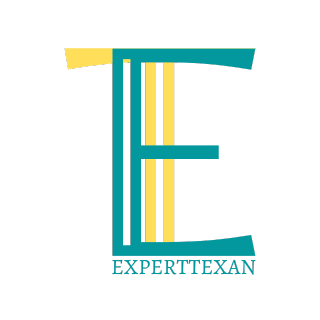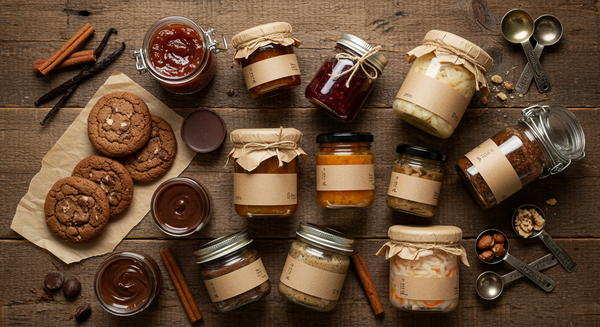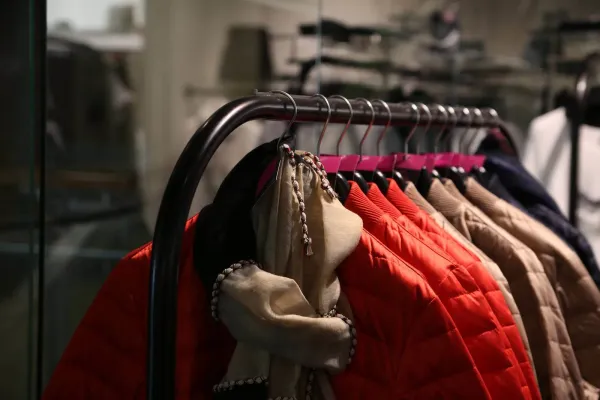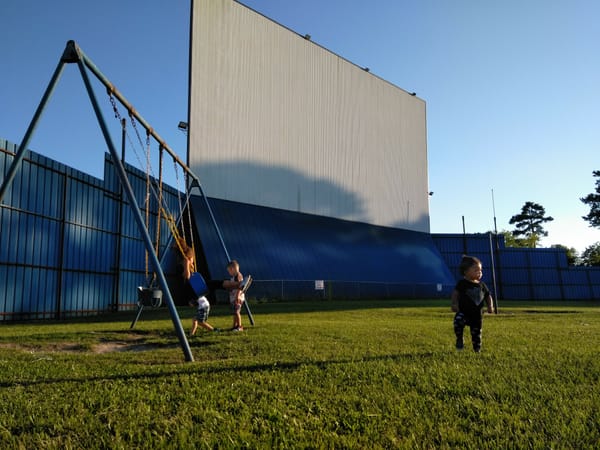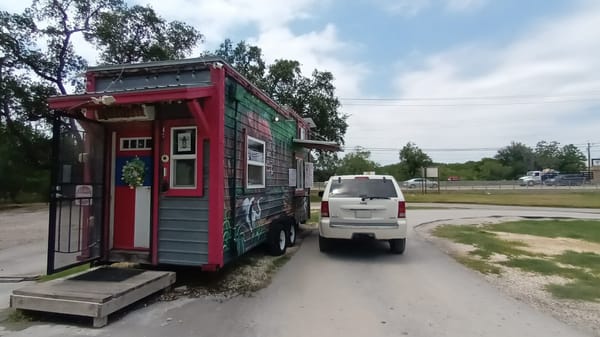32 Things Nobody Tells You About Rent-to-Own Buildings
Discover essential facts about rent-to-own sheds, from financing without credit checks to choosing the right design and size for your needs.
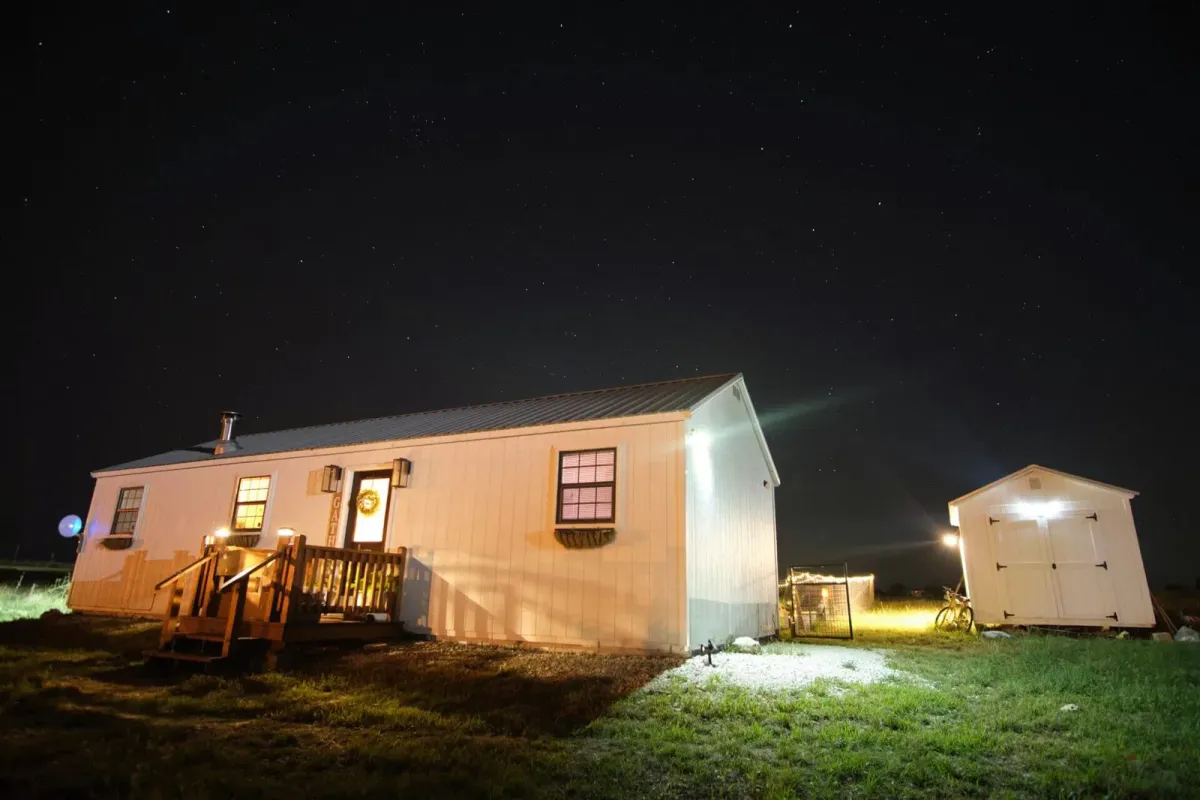
A rent to own shed is a great option for those looking to add extra storage space without breaking the bank. Whether you're looking to store tools, lawn equipment, or just need extra space for a project, renting to own can be a convenient and affordable way to get what you need.
If you're considering purchasing a storage shed with monthly payment options, there are certain facts you should know about the process.
I should know! I've gone through the process of purchasing three sheds, including a shed (it's called a shed, but it was closer to a garage, really) that I converted to a tiny house.
This article will provide an overview of 32 important facts you must know about rent-to-own sheds to ensure you make the best decision for your situation.
From understanding the terms of the contract to learning about the different types of sheds available, this article will give you the information you need to make a smart decision when it comes to buying a rent to own storage building.
What is a Rent to Own Shed
A rent to own shed is when you purchase a portable building or utility shed with either a small down payment (or none at all) followed by monthly rental payments of anywhere from 12 - 60 months.
These days, the term "shed" is used rather loosely. The line between "houses" and "sheds" continues to become more and more blurred as the tiny house movement has taken hold and continued to gain popularity across the nation.
Thousands of people are using "sheds" or rent to own "garages" (also sheds, but bigger and nicer), to build everything from ADUs (Additional Dwelling Units), to In-Law Suites, and even full-blown tiny houses for personal homes, or as Airbnb rentals.
Once the portable building is paid off, it's yours forever. However, until it's paid off completely, it is simply a building that you are renting and there are conditions in the rent to own shed contract that you need to be aware of.
Understand How Rent to Own Shed Financing Works
When you are financing a rent to own shed, it's typically called a "Lease to Own" agreement.
For instance, the shed may be priced at $8,000, but instead of paying $8,000 in cash, taking out a loan on the shed, or putting it on a credit card, you can lease it from a finance company instead by paying monthly rental payments until it's paid off.
Financing a rent to own shed typically does not involve a credit check. This can be an attractive option for a lot of people for many reasons:
- You're preparing for a big purchase and do not want to have your credit dinged with a hard credit pull
- Your credit score is not the greatest and you may not qualify for traditional financing options
- You do not want to take out a loan due to the risks involved should it end in default (lease-to-own financing generally has far fewer repercussions than defaulting on a loan)
Depending on where you purchase a rent to own shed, some lenders require larger deposits once the cost of the shed exceeds a certain amount.
But in general, instead of a credit check, you typically put down a small deposit on the purchase, assuming the cost of the rent to own shed is under $10,000 - $15,000.
The deposit is generally equivalent to the first month's rent.
So if the monthly lease rate is $150, you'd have to put down $150 as a deposit, and pay $150 for the first month's rent. Which means you'd owe $300 on the day you sign for the shed.
The downside of a rent to own shed lease agreement is that if the cost of the shed is $8,000... when you lease to own, the price of the shed actually becomes $16,000.
Unlike loans, most lease to own agreements do not charge interest. This is just the cost of the lease to own option.
As you can see, it's in your best interest to pay the lease agreement off early to avoid paying twice the cost of ownership compared to what the rent to own shed is actually worth.
Identify What Kind of Rent to Own Shed You Need
Generally speaking, the size, shape, design and features included in the rent to own shed will all influence the overall cost of the shed. The more windows, doors, or other upgrades you add to the building - the higher your total cost.
It's important to narrow down exactly what you want vs. what you actually need.
Be prepared to cut back on those if the cost exceeds what you're able, or willing, to pay.
The Size of the Shed
The size of the rent to own shed is going to be the first influence on the cost. The bigger the building, the more materials are used to build it, therefore the cost is going to be higher.
But, you also need to make sure that the space is adequate for whatever you plan on using the rent to own shed for.
For instance, livable sheds tend to have a minimum square footage requirement in areas where they're legally allowed to be used as a primary residence, or as an ADU (Additional Dwelling Unit). Even if there are no minimum square footage requirements, a 50 square foot shed probably wouldn't be conducive for a comfortable living situation.
Before you even go to the rent to own shed dealers, you also need to identify where the shed is going to be placed, and make sure that the size matches the space you have planned for it.
It's time to get out the trusty measuring tape!
Also, bring the measuring tape to the rent to own shed dealership. You'll want to measure where you were planning on placing tables, shelves, desks, etc., and picture how it all fits.
You may discover that the shed is larger (or smaller) than what you originally believed you needed.
The measuring tape should help you determine if you need to choose a different size.
The Design of the Shed
Sheds are designed to be.... well, sheds. While they may be used for a wide variety of applications, they're generally very narrowly designed to be one thing; a shed.
So depending on what you are planning to use the shed for, you need to keep the overall design of the shed in mind.
Are you planning to have loft spaces? If so, is head room important? You may need to go with a barn or slanted style roof so that it allows for greater head space in the loft area.
Are you in an area that receives a lot of rain or snow? Then you may want to make sure your shed has a slope that's angled enough to facilitate an efficient slide so that rain and snow do not accumulate anywhere on the roof.
Do you want a lot of light inside the shed, or would you prefer it to be dark? The number of windows and doors, as well as their placement, will play a role in lighting.
Do you want your rent to own shed to look like the shed that it is, or do you want to give it more of a cottage or a house look and feel?
Things like the length of the eaves and drip edge of the roof line will change the exterior appearance to look more like a cottage or house, or more like a shed. If the drip edge is nearly flush with the exterior wall, then it looks more like a shed. If the drip edge of the roof extends further out from the building, it has more of a house or cottage appearance.
There are two difficult things about building a tiny house conversion, shed to home, or any other unconventional living space:
- It's expensive to pay someone else to finish it out, so you'll want to do as much as you can on your own. I'm not a wood-working expert, but I made really nice window-trim for the inside of our windows. It's relatively easy to do!
- Furniture for unconventional living spaces (e.g. tiny homes) is EXPENSIVE! You would think that since it's smaller, it would be cheaper. But because it's such a niche market, it's the opposite. Not only is it difficult to find... it's also extremely expensive to buy tiny house furniture. Paying someone to custom build it is even more expensive.
That's why it's helpful to learn some basic (and maybe even some intermediate) woodworking skills so that you can build your own simple tables, chairs, coffee bars, pantries, window trim, and maybe even a simple sofa to fit in a custom space in your new tiny house.
The Colors of the Shed
The rent to own shed dealership may offer discounts on inventory that they have at their location. And they can typically get the portable building delivered much quicker since they're already in possession of it.
However, if you're willing to wait - you can order the exact building you want.
So if things like color, number of windows, location of the door, etc., are all important to you - then you will likely have to be patient and wait for the delivery.
If you're willing to wait - you can order the exact building you want.
I've ordered three such buildings, and the first two were custom orders.
The third one was sitting on their lot, and we compromised on some of the things we wanted, and took the deal for the lot inventory instead.
Remember, paint can be redone. So if the only thing wrong is the color, and the deal they're offering is a steal - well, you may want to consider just painting the shed yourself and take the deal.
The Materials Used to Build the Shed
Understanding what materials are used to build the shed you are interested in buying is of utmost importance.
- Are the wood runners treated? If so, how long are they protected from things like termites?
- Is the flooring made of plywood? OSB? Is it sealed or protected in any kind of way?
- How many pounds per square foot is the shed designed to take?
- Is the roof metal or traditional roofing shingles? Are they wind-rated?
- Is the gauge of the steel used on the roof sufficient to meet minimum standards for a livable structure (important to know if humans or animals will ever live in the space)?
- Does the door opening meet minimum handicap access requirements as outlined in the Americans with Disabilities Act? What about the type of threshold on the door? Is that important for your particular needs and intended use?
In addition, you have to decide what you want the builder to include in the shed.
Do you want them to put in 5 windows? 10? None?
It's generally cheaper for you to have a local contractor install your shed windows (post-delivery) than it is to have the builder install them.
In most cases, it's actually cheaper for you to buy the windows yourself, and have them installed post-delivery by a local contractor.
The premium that RTO shed companies charge for adding windows and doors is pretty significant and can add a hefty increase to your overall monthly bill on your rent to own shed.
Warranties on the Shed
Depending on the dealership, and the rent to own shed builder, warranties may vary greatly between them all. So it's important that you ask for warranty information, and compare them to see what those differences are - if any.
For instance, the roof on two of our sheds has a warranty of 50 years. One of them is only 15 years. They're all steel roofs, but the warranties do vary.
In contrast, our exterior walls have a 20 year warranty, and the runners underneath the building have anywhere from 5-10 year warranties against things like termites.
There is also a 12 month service warranty where if we have any issues (e.g. windows leaking when it rains), they'll send someone out to the property to address the issue.
The Life-Expectancy of the Shed
Sometimes a rent to own shed company will have a life-expectancy for the shed. In most cases, the amount of time that they believe the shed will last far exceeds the remainder of any buyer's lifetime, so it's generally a non-issue.
However, it is always helpful to confirm if they have one - and if so, what the estimate is.
Long Term Plan for the Rent to Own Shed
Plan to live in, use for storage, an office space, a guest house, a chicken coop, a man-cave or workshop, etc. Do you plan to keep it indefinitely, finish it out and sell it, or transport it at any point?
Before buying a rent to own shed, you should determine what your long term plans are.
If you plan on trying to sell it at some point down the road, then you may want to consider going with the most widely appealing designs and colors, rather than your own personal tastes.
A yellow shed with a barn-style roof and barn doors may be much more difficult to sell than a white shed with a gable-style roof, and a traditional house-style door.
Who to Buy a Rent to Own Shed From
Not every rent to own shed company is the same. In fact, they're all very different. It's important to vet the rent to own shed dealership, as well as the builder that all of their rent to own sheds come from.
Reviews
One of the first things you should check on are:
- Instagram (are there a lot of negative comments on their posts?)
- Google Business Profile Reviews
- BBB (Better Business Bureau)
- Yelp Reviews
Generally speaking, you'll always find negative reviews on every company. But you'll want to look for trends, and overall ratings. Are people all complaining about the same thing? Is that thing significant enough to be a serious red flag that you shouldn't do business with them?
Price, Delivery and Warranties
Every RTO company is going to have a different set of prices, delivery policies, and warranties or service agreements. They may offer different insurance policies, or none at all, and much more.
Most shed dealerships offer free delivery, however, depending on how far away you want the rent to own shed delivered, they may charge a delivery fee.
Most shed dealerships offer free delivery within 50 - 100 miles from the dealership.
The fee they charge beyond a certain point is usually a "per mile" fee, so you'll want to know what that is in advance.
It may make more sense to purchase from a dealer that's closer, and who offers free shipping to your property.
RTO Builder
RTO shed companies across the US have a variety of builders that they sell buildings for. They usually contract with a single builder.
It could be a local, national, or even international company, but it's generally the same builder for all of their rent to own shed options.
You'll want to know in advance who the builder for the shed dealership is.
You'll want to know in advance who that builder is and do your due diligence on the builder as well.
After all, once the building is delivered, it's not really the dealer that you have to worry about - it's the rent to own financing company that you're working with, and the builder that built the building.
Decide What Kind of Rent to Own Term You Want
Depending on the dealership you purchase from, and the rent to own shed financing companies they work with, your lease to own options may vary.
For instance, sometimes they may only offer up to a 48 month lease term. Whereas a different dealership and lender may offer 60, or even 72 months.
Maybe it's only 48 months for up to $10,000 sheds, but 72 months for sheds over $10,000.
You'll want to know what financing options are available, and select them accordingly.
Keep in mind, the total price of the shed may change based on how many months you agree to for the total length of the lease.
Is a Rent to Own Shed Legal Where You Are
Before you do anything else, you should first make sure that it's even legal to have a rent to own shed on your property.
Nothing is worse than going through the entire process and all of the expenses involved in acquiring a rent to own shed, only to find out that it's against your deed restrictions, city, county, or even state laws.
Decide Where the Shed Will Go
Once you have confirmed that it's legal to have a rent to own shed on your property, then you'll need to make the big decision of where to place it.
Is it going to have electricity, water utilities and plumbing connected to it? If so, you'll need to make sure you can get those things run to the location where you plan on placing the shed.
Are there easements involved? Are there other water lines, electric lines, drainage lines, or septic tanks or fields that might be in the way of running new utilities to the shed?
What about overall cost? The further the utilities need to be run to the shed, typically the more expensive the cost of running the utilities.
Do you need to acquire permits? Inspections? What does that process look like?
Prepare for the Placement of the Shed
Next, you'll need to prepare for the placement and foundation of the rent to own shed on the property.
Is it going on:
- A traditional foundation?
- Rock pad?
- Blocks?
- Pier & Beam?
Keep in mind that if it's a rent to own shed, they may have restrictions in the lease to own agreement that says it cannot be on a traditional foundation until it's completely paid off.
You'll want to confirm before ever signing the lease what type of foundation you're allowed to place it on.
Skirting for the Shed
Of course, depending on what type of foundation it's placed on, you may need to look into skirting for the shed.
If you don't use skirting, trust me when I say that every critter out in the wild will be trying to make the underside of your shed their new home. That includes skunks, armadillos, rats, snakes, etc.
If something is small enough, and likes the underside of your new rent to own shed - animals will build a home there. It's much easier to prevent them from even being enticed there in the first place by installing a skirting than it is to get them out after the fact.
Finishing Out the Rent to Own Shed
Oftentimes, a person is not buying a rent to own shed to use it simply as a shed.
A lot of times, it's going to be an ADU (Additional Dwelling Unit), an outbuilding used as an office, man-cave, she-shed, or some other use where the building needs to be finished out.
While nearly every rent to own shed agreement explicitly says that improvements such as finishing out the shed cannot be done while you still owe on the shed, that does not stop people from doing it.
And frankly, nobody seems to care, at least in my experience. You don't have to search long to find thousands and thousands of people finishing out rent to own sheds.
Just keep in mind that whatever improvements you make to the shed will not be yours if you return the shed, or if it gets repossessed. Meaning, you won't be compensated for those improvements. After all, it's not really your shed until it's paid off.
So you basically just improved someone else's shed with your money.
On the flip side, if you modify the shed and those changes are deemed to be damages, or otherwise devalue the product, you may be liable for whatever those damages end up being should the rent to own shed end up back in possession of the dealership as a result of the rent to own agreement being terminated.
Planning to Frame the Interior of the Shed
Before ever buying the rent to own shed, you would do well to already have at least an idea of how you might plan on framing out the interior.
If you buy the shed, and then decide you want to frame out interior walls, that could present an issue. Having a window right in the middle of the wall area where you want to frame out an interior wall would be annoying.
But if you knew where you wanted to frame an interior wall beforehand, you could have the window installed further down so that it doesn't interfere with your interior wall plans.
Planning the Plumbing
Because a shed is generally limited in space, it's essential that you carefully plan out the placement of the plumbing and where it comes in and out of the building.
A lot of people capitalize on space by planning to have all of the water and drainage on a single wall whenever possible, to eliminate the waste of space and make the plumbing bill much cheaper than it would be if you have water connections and drainage pipes on opposite sides of the building.
Insulation Type & Rating
You'll also want to heavily research what type of insulation you're going to need for your region and the climate in your area. In most regions of South & Central Texas, the temperatures rarely drop below freezing, so we're able to get away with insulation options that certainly wouldn't fly in places like Michigan.
There are a lot of different types of insulation to consider as well:
- Rockwool Insulation
- Spray Foam Insulation
- Fiberglass Insulation
- Insulation Boards
- Flooring Insulation
And more.
Keep in mind that the floors on most rent to own sheds are not insulated when they're delivered. So you'll want to research how to insulate the floors, or the underside of the shed, especially if you're placing the building in a cold climate location.
Interior Walls
One of the things you'll want to consider when looking at rent to own sheds is the interior walls. Are they 2x4 studs? How are they spaced? Are they 16" on center? 24" on center?
How the interior walls are framed out can also determine whether or not your rent to own shed will pass building code and inspections in your area should you want to use it for anything other than storing tools, materials and personal belongings.
If it's built with 2x4 studs spaced 24-inches on center, then there's a good chance you may not be able to use the building for living in or using as an office space.
The Importance of House-Wrap and Moisture Control
In addition, you'll need to know if the building was built with a house-wrap or not. The wrap is known by different terms, but the purpose is the same: moisture control inside the building.
You'll need to know what kind of house-wrap is needed in your climate, as well as how it should be installed.
Failure to understand this and get it properly done can result in serious issues down the road such as mold and mildew throughout your building. It's NOT a cheap mistake to fix.
The Importance of Air Flow
When it comes to the interior walls and ceiling, you'll also need to know how air flow should be managed based on whether you install the ceiling right to the studs, or if you have an attic space with air flow above the ceiling.
Depending on what type of ceiling you plan on having will determine what type of airflow you'll need to have in the rent to own shed.
Long Term Maintenance of a Rent to Own Shed
At the end of the day, most people tend to keep their rent to own sheds for well beyond any service warranties. So it's important to take care of your rent to own shed from day one.
That includes routine maintenance such as:
- Painting the building every 2 years (they're notoriously only given 1-2 thin coats of paint during construction), or as needed
- Checking the roof and making sure everything is sealed, tightened, etc
- Install gutters to keep rain away from the rent to own shed
- Make sure water isn't pooling underneath the building
The better you take care of your rent to own building, the longer you'll be able to use it for years to come with fewer unexpected complications.
Exterior Walls
The exterior walls of a rent to own shed will vary greatly between different builders. Some may be built with cheap compressed particle board types of wood, others may be made with newer vinyl siding, and others may be made with real wood.
Knowing and understanding what type of exterior walls you have on your particular shed will help you better understand how to take care of your building.
Exterior Paint
In my experience, most rent to own sheds that I've seen (and I've seen a LOT) only have 1-2 coats of paint applied to the exterior of their buildings.
If you live in an environment where the exterior of the building is faced with a harsh environment, then you'll probably want to consider applying another coat or two of paint to the building as soon as it's delivered.
The builder will typically provide you with the exact paint used on the building so that you can get it mixed at your local paint supplier.
Roofing Type
I think one of the most important things you can choose on a rent to own shed is the roofing type. Personally, I have only purchased sheds with the metal roofing because they tend to have much longer warranties, and will generally last longer than I will live on this earth.
The building will likely have rotted away long before the metal roof rusts away and becomes unusable. We're talking 50+ years in most cases.
But, aesthetics can also be important, so if a metal roof isn't exactly what you're going for, then you always have the option to go with a traditional shingle roof as well.
Returning a Rent to Own Shed
At the end of the day, whether it's buyer's remorse, your circumstances change, or you just no longer have need for a rent to own shed, most lease to own agreements allow you to simply call up the lender and request to return the shed.
Assuming you're up to date on the payments and do not owe anything currently, they will generally come and get the shed at no cost to you. And, assuming there are no damages to the building caused by you, there will generally be no additional fees associated with returning a rent to own shed.
Of course, you'll want to confirm this before signing a rent to own shed agreement to begin with, but that's generally one of the perks of even buying a rent to own shed to begin with.
Selling a Rent to Own Shed
Alternatively, if you own the shed (or can sell the shed for more than what you owe), then you can always sell the shed. My brother purchased a shed in a remote part of the country to operate his eBay business out of.
His shed was only partially finished out, with a few minor improvements including electricity, but it wasn't necessarily the most beautiful shed ever built.
Once he outgrew the space, he listed the shed online and it sold within the same week.
And that's in an incredibly remote part of the country where the population within a 100 miles is less than 100,000 people.
So, if he can sell a partially finished out shed for a small profit in that remote of an area, I imagine that it'd be relatively easy to sell it for a greater profit in larger population centers of the country.
RTO Shed Recap
I realize that was a lot of information about rent to own sheds, but hopefully you learned something beneficial and were able to take away something of value from all the information that was shared.
At the end of the day, if you aren't sure how long you'll actually need the storage shed for, and you're not sure if you want to get into a rent to own agreement, it may make more sense for you to just rent a self storage unit for a while instead.
Sleeping on the rent to own shed option may give you some clarity on whether or not that's a good fit for your personal needs.
Did I miss anything important? Reach out to me and let me know so I can add it to the article!
